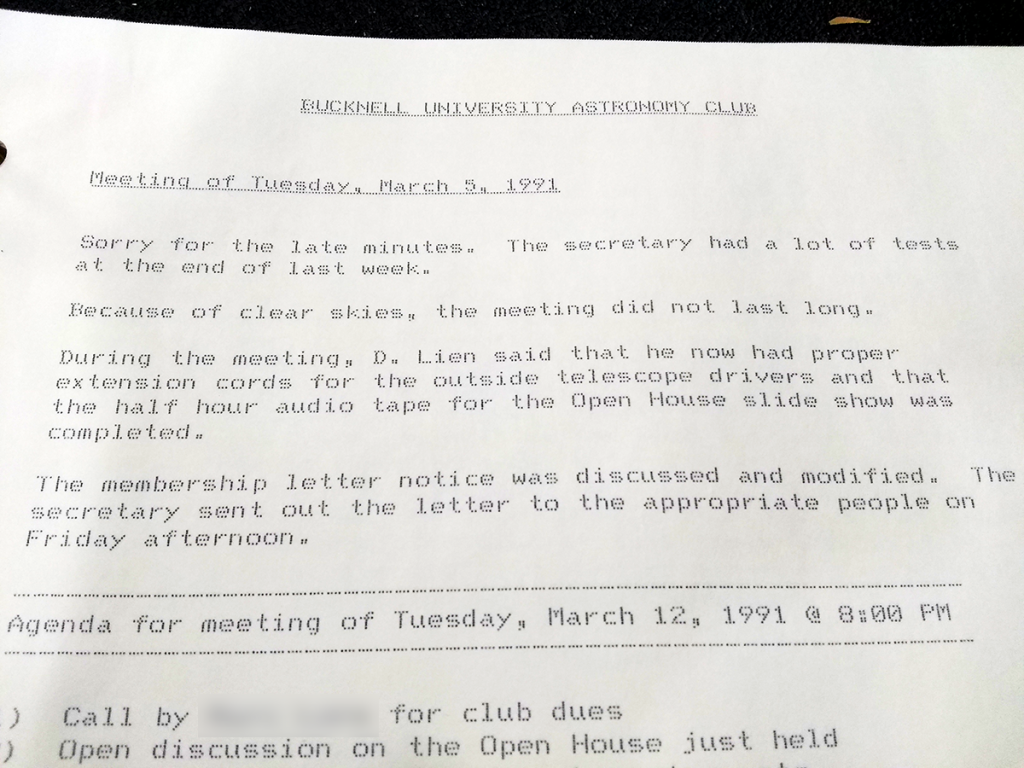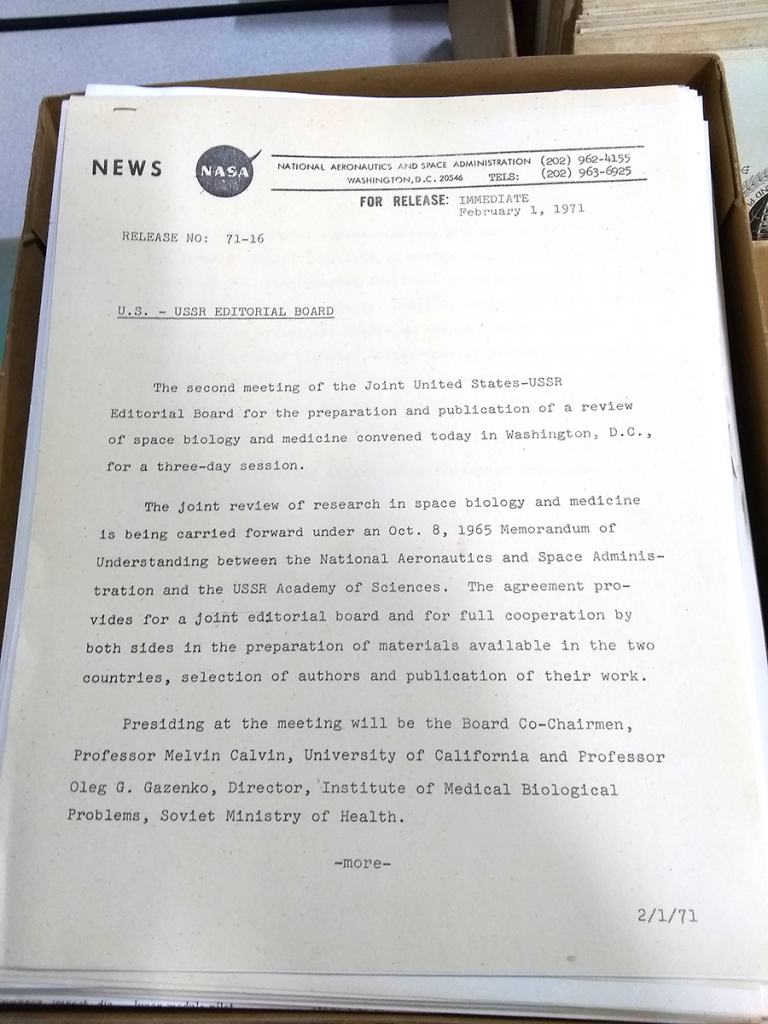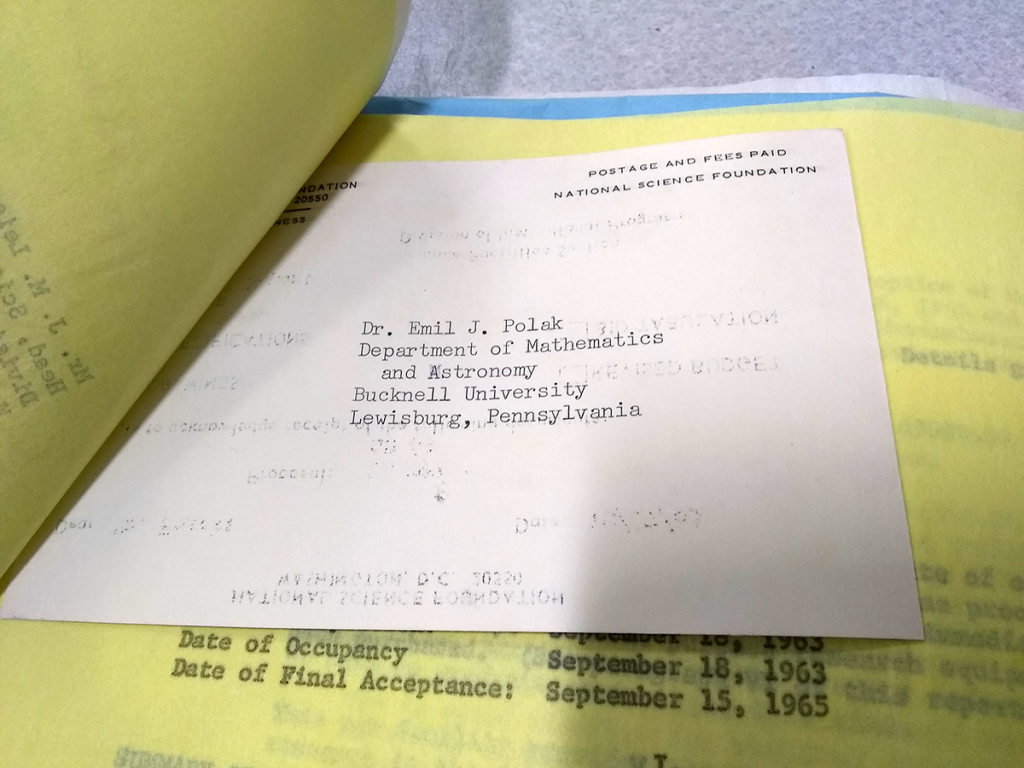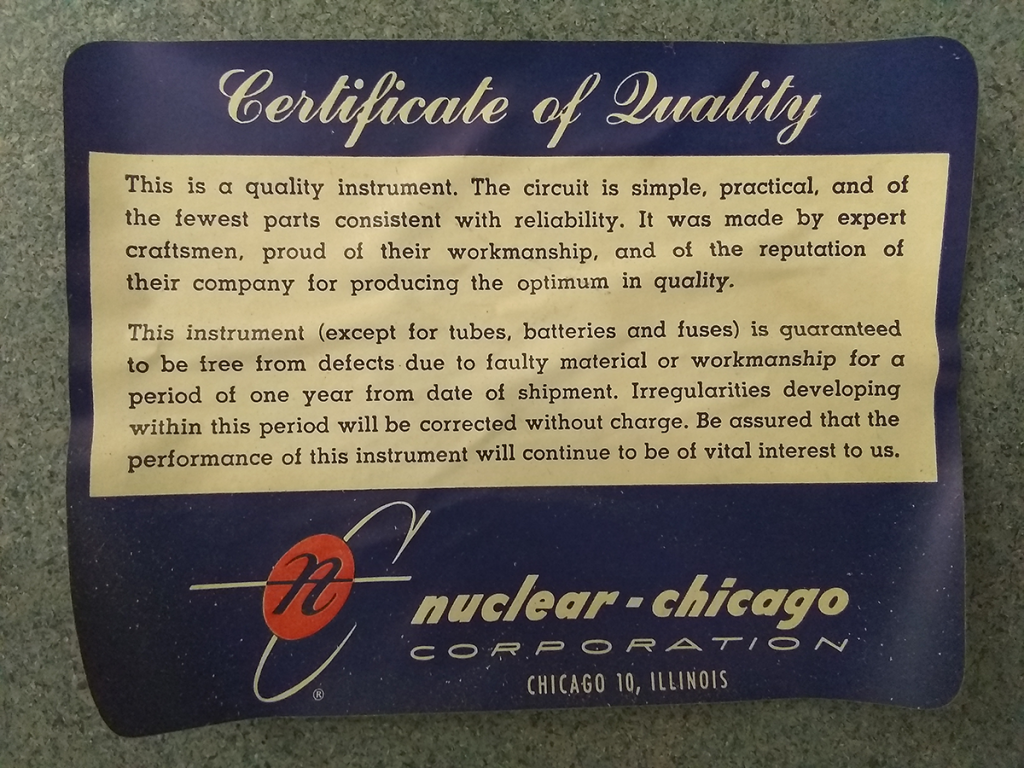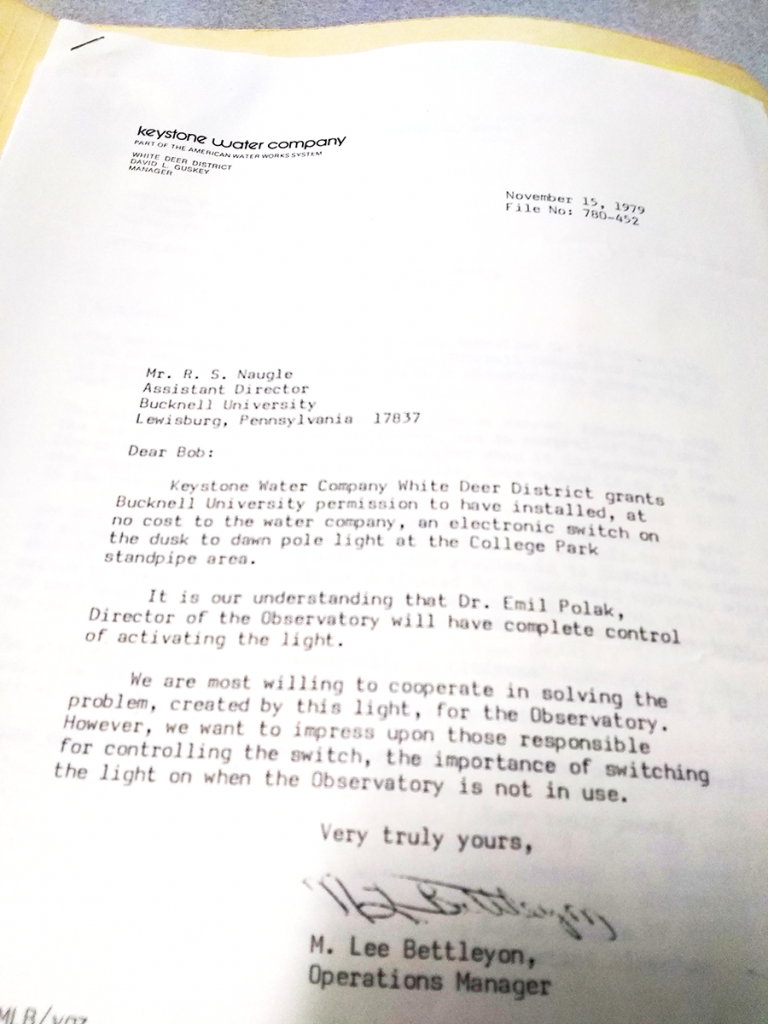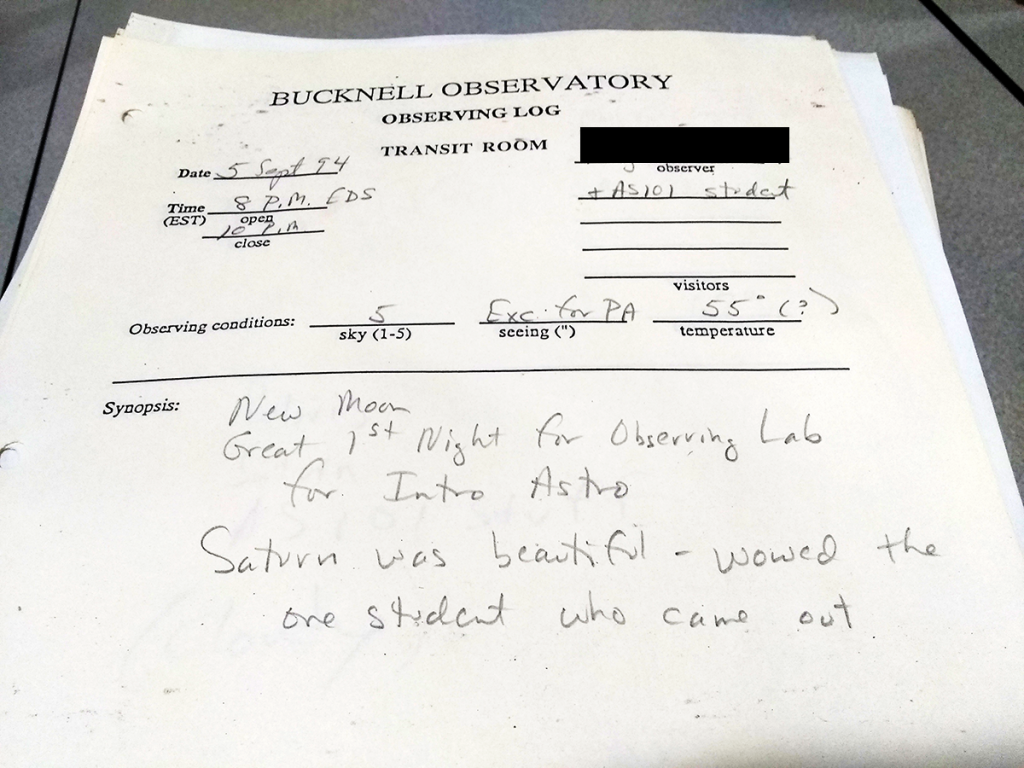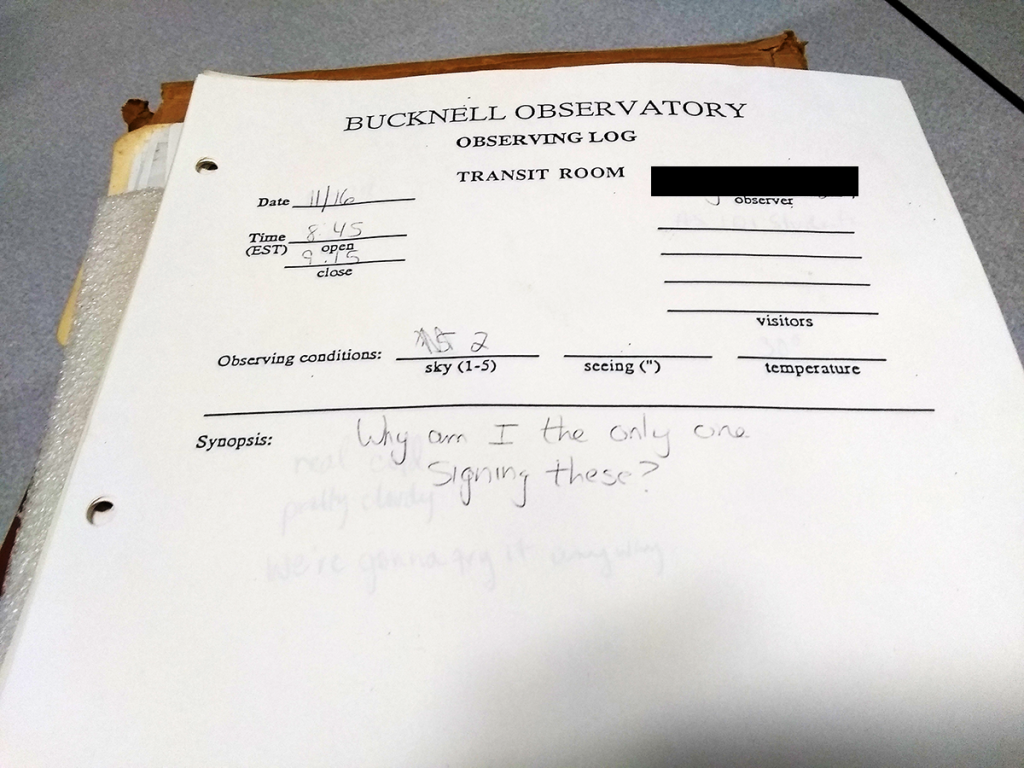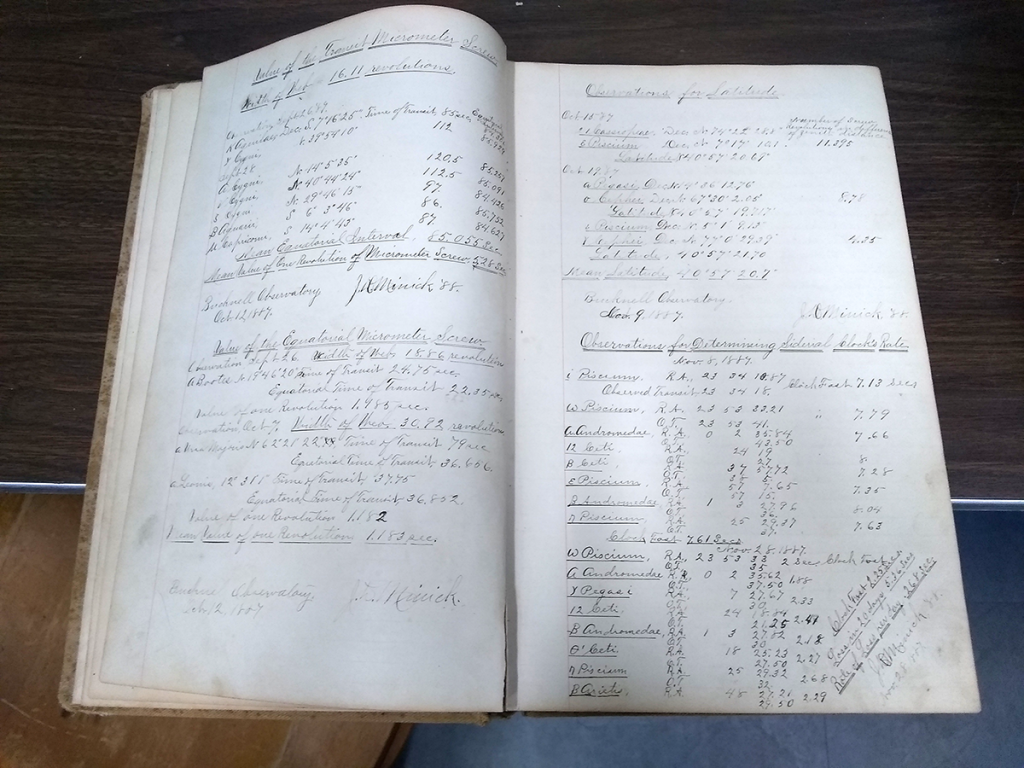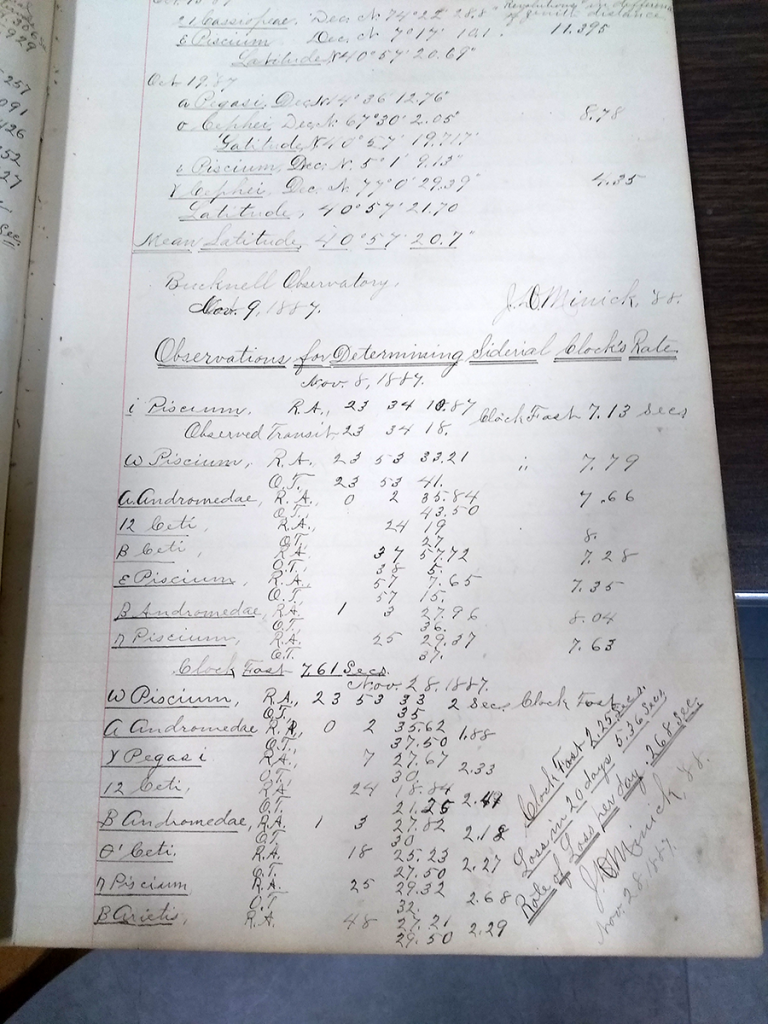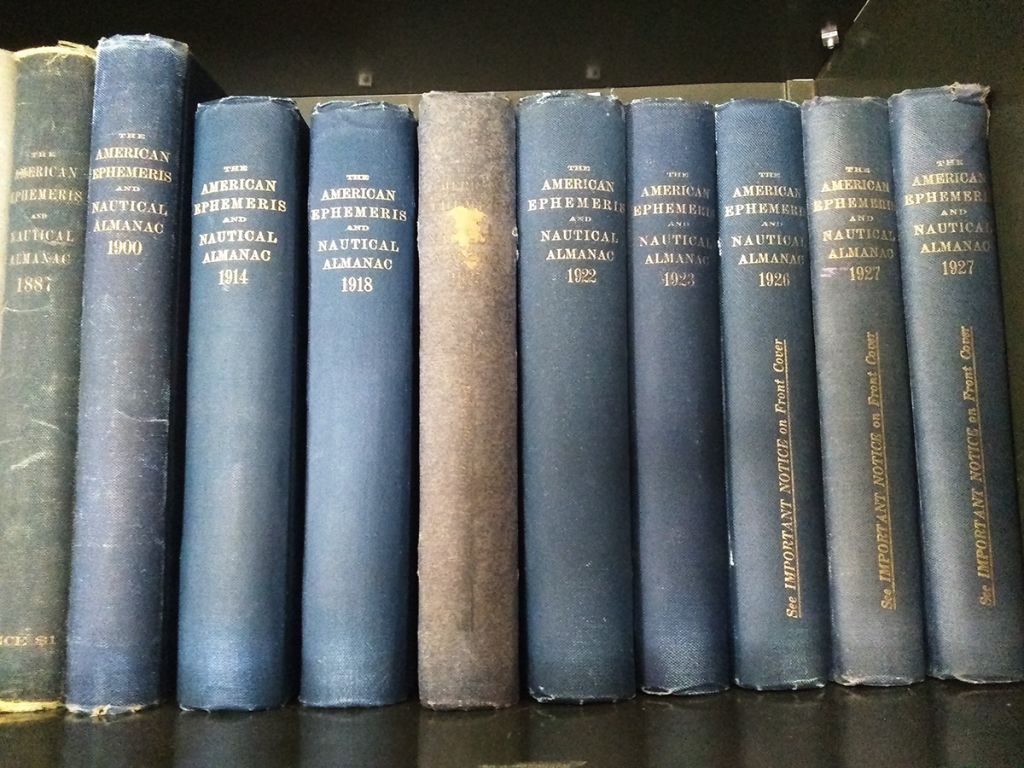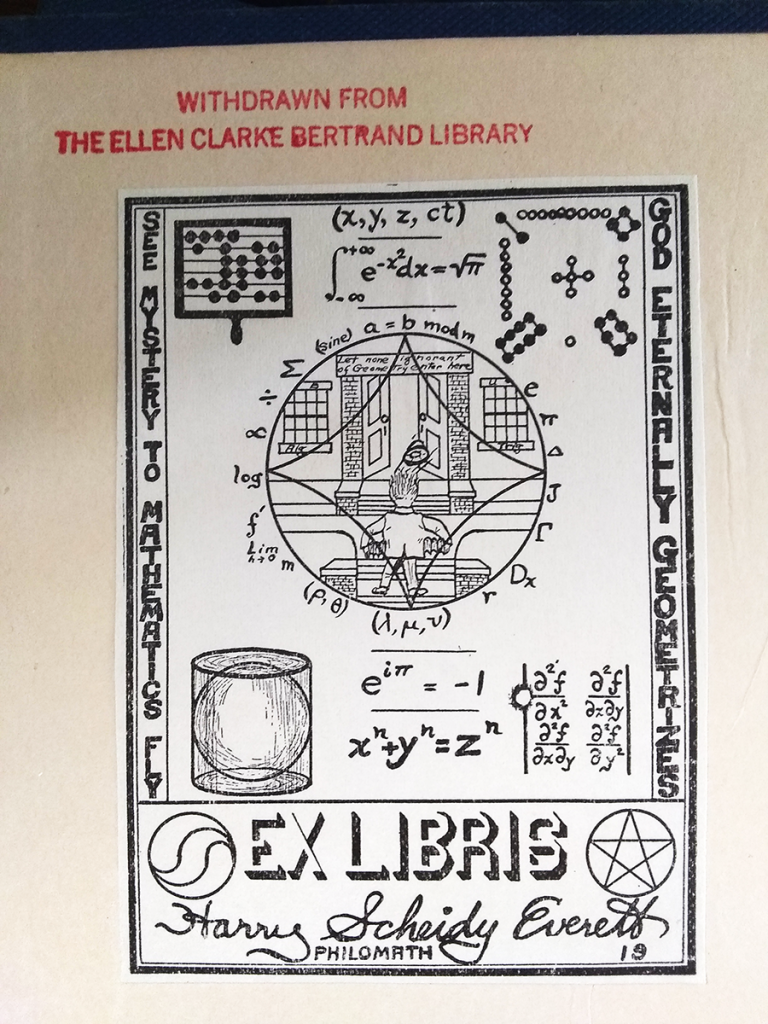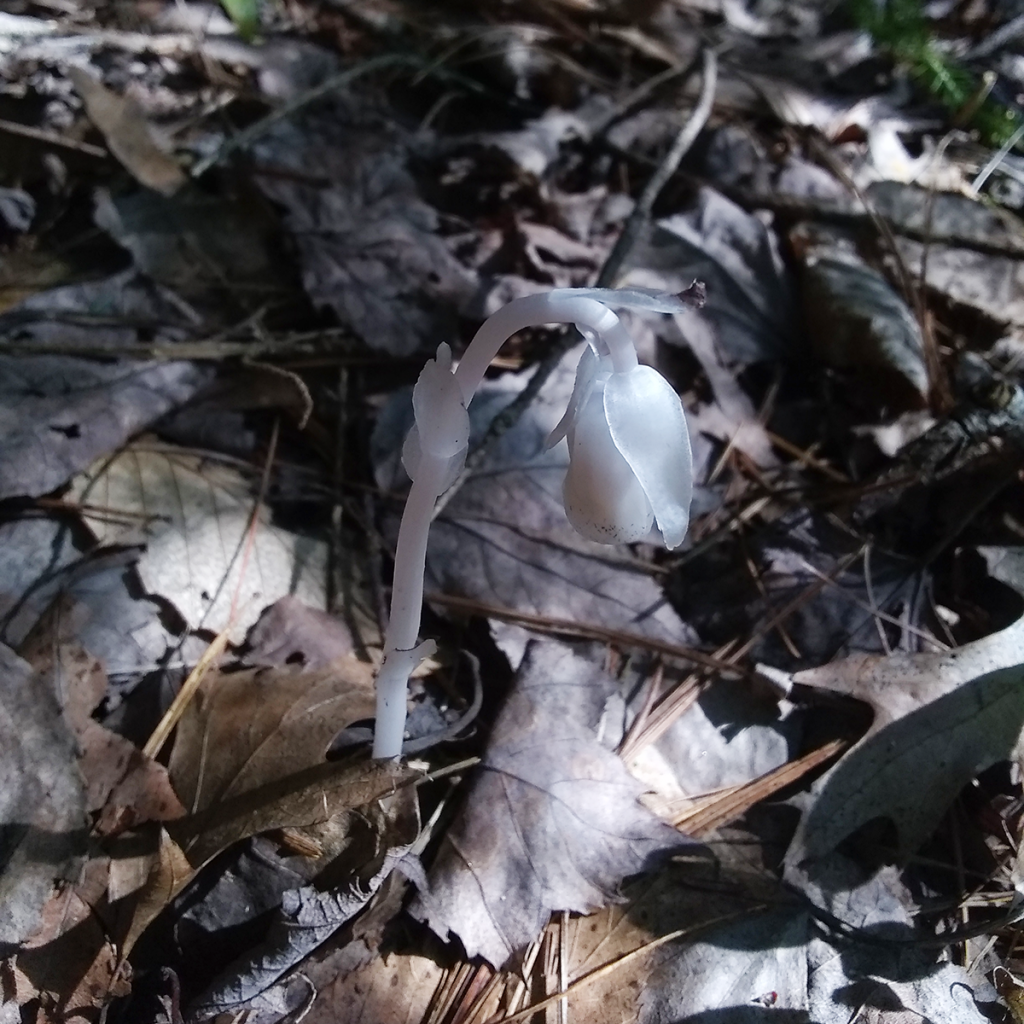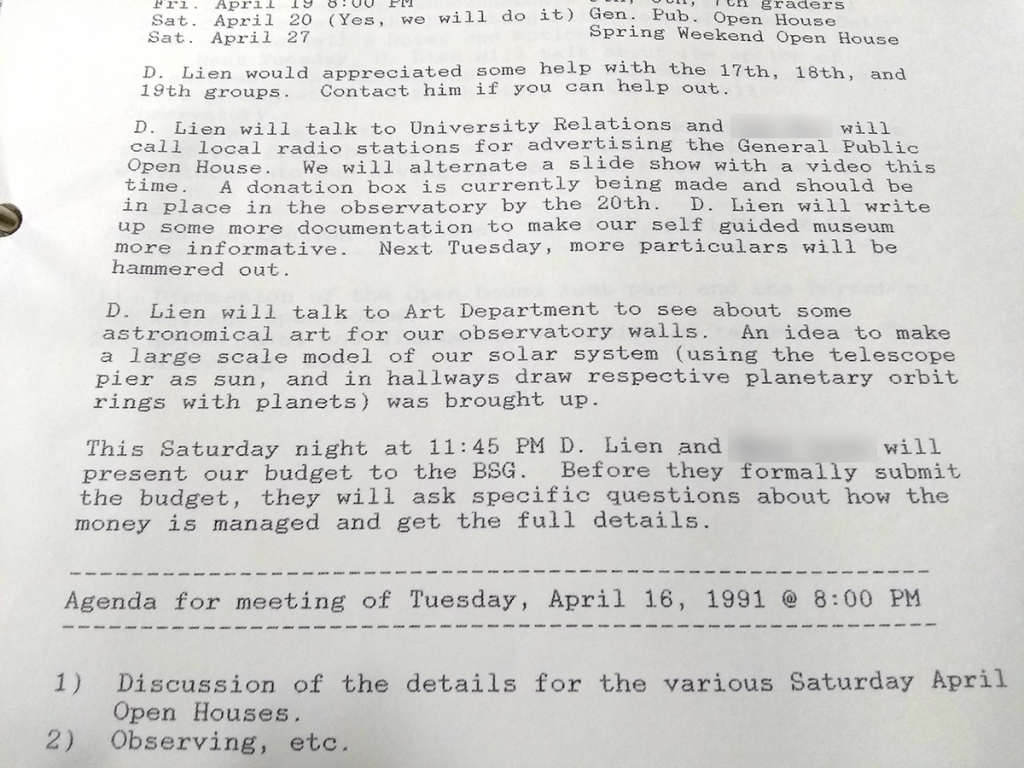
In 1991, the Astronomy Club had clearly grown tired of plain walls at the Observatory. With a fantastic mural adorning the interior stairwell to access the Clark telescope (subjects of future posts!), the regular hallways must have looked… fine.
Prof. Dave Lien was the faculty member overseeing all of this, and in April the club had decided a scale version of the solar system would look pretty great. Time to check in with the Art folks!
(Also: “Observing, etc.”)
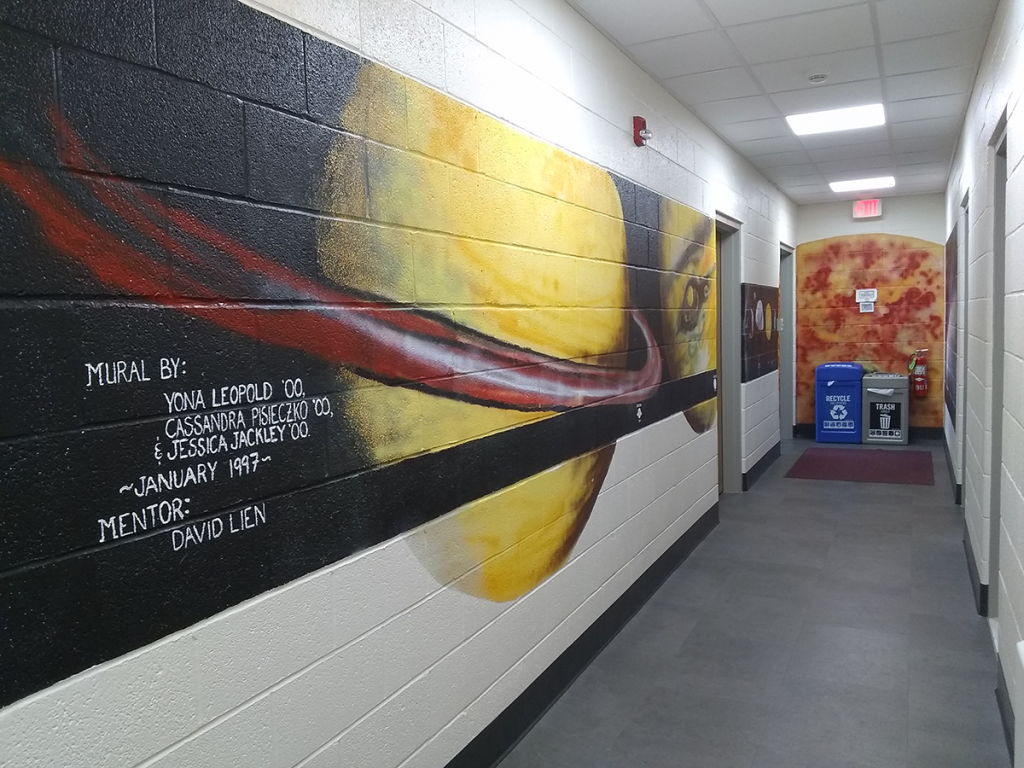
And you know what? It’s way better than white walls! The final design ended up being different from the proposed idea, though the concept is the same. The Sun occupies a place of prominence, and the mural includes both scaled sizes and scaled distances of our solar system, shown side by side.
Not both at once: in that case, it either wouldn’t fit in the building or the planets would be so tiny you couldn’t see them. Both of which really defeat the purpose. (Not that they aren’t fun demonstrations in their own right!)
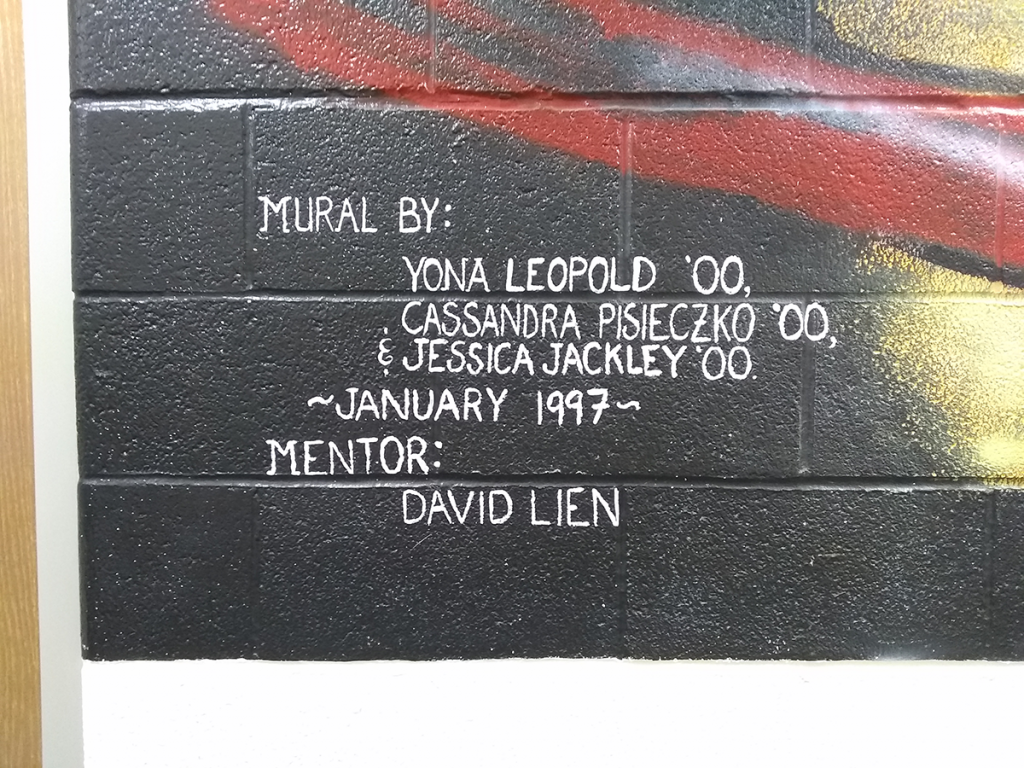
Five and a half years later, ta-da! After a quarter-century, several building repaintings and a recent renovation, it still looks sharp.
